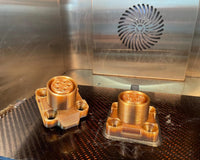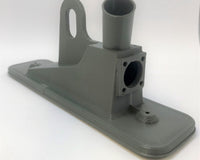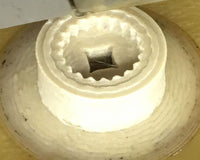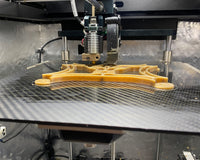3D printed PEEK spare parts prevents expensive production downtime
At 3D4makers we are specialized in the production of high-performance filaments for FFF 3D printing (Fused Filament Fabrication). The majority of the polymers produced are high-temperature polymers, which have extremely high melting temperatures and therefore place great demands on filament extrusion systems. Our highly specialized systems are based on in-house development. Certain parts are purchased and include standard machine parts. When components fail, the entire system frequently comes to a halt, resulting in costly production downtimes. Components are produced as much as feasible in-house to maximize reliability. High-performance polymers are also frequently utilized in 3D printing. A gear in the extrusion line's melt pump serves as an illustration of this. The constant temperature range for this is +/- 200 ° C.

Fig. 1: Gear made of PUR and 3D-printed gear made of LUVOCOM 3F PEEK 9581 NT
During use, the component broke down (Fig. 2). The system stopped when the gear started to deform. Purchasing replacement parts would have required many days. Production would have suffered greatly as a result. A CAD design was made for a rapid repair, and the gear was produced on-site with a Intamsys funmat HT 3D printer within two hours. Due to its great chemical resistance, high strength and toughness, excellent tribological characteristics, and permanent temperature resistance of 260°C, the chosen material, LUVOCOM 3F PEEK 9581 NT, was used. The alternative, which was actually just meant to be a temporary fix, has excelled to the point where it has been in use for many years already.









